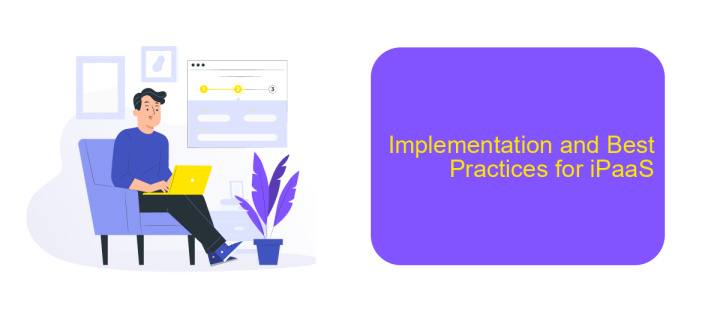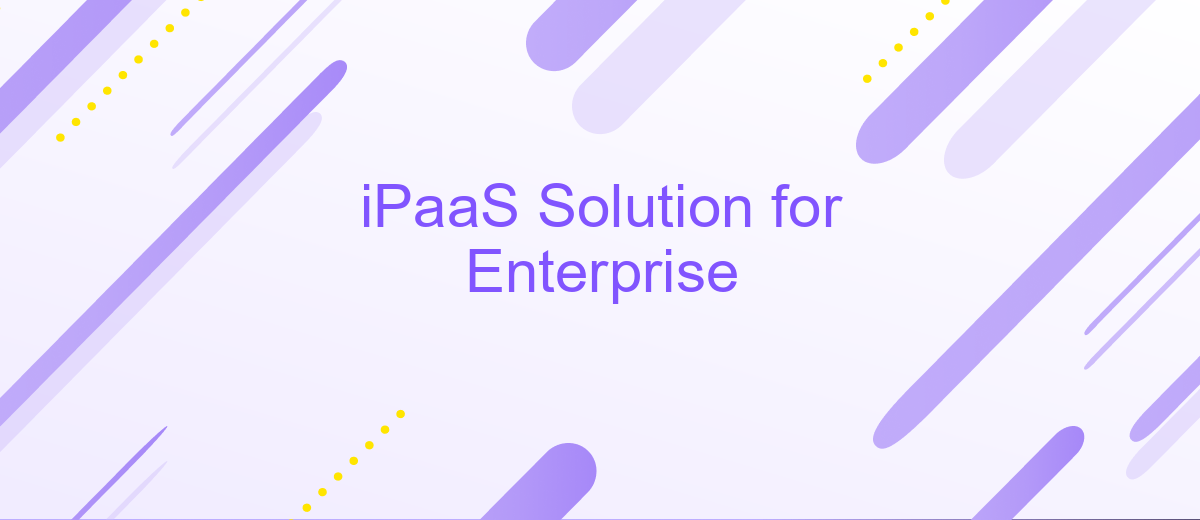iPaaS Solution for Enterprise
In today's fast-paced digital landscape, enterprises are increasingly turning to Integration Platform as a Service (iPaaS) solutions to streamline their operations and enhance connectivity. iPaaS offers a robust, scalable, and efficient way to integrate various applications and data sources, enabling seamless communication and improved productivity. This article explores the key benefits and features of iPaaS solutions for modern enterprises.
Introduction to iPaaS Solutions for Enterprises
In today's fast-paced business environment, enterprises require seamless integration of various applications and data sources to maintain efficiency and competitiveness. Integration Platform as a Service (iPaaS) solutions offer a robust way to connect disparate systems, streamline workflows, and enhance data accessibility across the organization.
- Automated workflows: iPaaS solutions enable the automation of repetitive tasks, reducing manual effort and minimizing errors.
- Scalability: These platforms can easily scale to accommodate the growing needs of an enterprise.
- Real-time data synchronization: iPaaS ensures that data is consistently updated across all integrated systems.
- Cost-effectiveness: By reducing the need for custom integration solutions, iPaaS can lower operational costs.
One notable example is ApiX-Drive, a service that simplifies the integration process by providing pre-built connectors for a wide range of applications. This allows enterprises to quickly set up integrations without extensive coding, ensuring that all systems work together harmoniously. By leveraging iPaaS solutions like ApiX-Drive, enterprises can focus on their core business activities while maintaining a high level of operational efficiency.
Benefits and Features of iPaaS Solutions

iPaaS solutions offer a myriad of benefits for enterprises, including seamless integration of disparate systems, enhanced data flow, and improved operational efficiency. By centralizing integration efforts, iPaaS allows organizations to connect various applications and data sources effortlessly, ensuring real-time data synchronization and reducing manual intervention. This leads to significant cost savings and minimizes the risk of errors. Additionally, iPaaS platforms often come with pre-built connectors and templates, enabling quicker deployment and faster time-to-value.
One notable feature of iPaaS solutions is their user-friendly interface, which allows even non-technical users to set up and manage integrations. For instance, services like ApiX-Drive provide intuitive tools that simplify the integration process, making it accessible to a broader range of users within the enterprise. Furthermore, iPaaS solutions offer robust security measures, ensuring that data is protected during transfer and storage. Scalability is another key feature, allowing businesses to expand their integration capabilities as they grow, without the need for significant additional investment.
Use Cases and Applications of iPaaS

iPaaS (Integration Platform as a Service) solutions are becoming indispensable for enterprises aiming to streamline their operations and enhance data integration across various applications. These platforms provide a unified environment to manage and automate workflows, ensuring seamless data flow and improved efficiency.
- Data Synchronization: iPaaS solutions enable real-time data synchronization between disparate systems, ensuring that all business units have access to the most current information.
- Application Integration: These platforms allow for the seamless integration of various enterprise applications, reducing the need for manual data entry and minimizing errors.
- Automated Workflows: iPaaS facilitates the automation of complex business processes, enhancing productivity and reducing operational costs.
- Scalability: As business needs grow, iPaaS solutions can easily scale to accommodate increased data volumes and additional applications.
- ApiX-Drive Integration: Services like ApiX-Drive offer pre-built connectors and intuitive interfaces, simplifying the integration process and enabling quick deployment of new workflows.
By leveraging iPaaS solutions, enterprises can achieve greater agility, reduce integration complexity, and enhance overall operational efficiency. These platforms are essential for businesses looking to stay competitive in an increasingly interconnected digital landscape.
Implementation and Best Practices for iPaaS

Implementing an iPaaS solution in an enterprise environment requires a strategic approach to ensure seamless integration and optimal performance. The first step involves defining the integration requirements and identifying the key systems and applications that need to be connected. This helps in creating a clear roadmap for the integration process.
Once the requirements are established, selecting the right iPaaS platform is crucial. Platforms like ApiX-Drive offer robust features that simplify the integration process, including pre-built connectors, real-time data synchronization, and user-friendly interfaces. These features enable businesses to quickly set up and manage integrations without extensive technical expertise.
- Define integration requirements and key systems.
- Select a suitable iPaaS platform, such as ApiX-Drive.
- Utilize pre-built connectors for rapid deployment.
- Ensure real-time data synchronization for consistency.
- Monitor and maintain integrations for continuous improvement.
Adopting these best practices ensures that the iPaaS solution delivers maximum value to the enterprise. Regular monitoring and maintenance of integrations are essential to address any issues promptly and to adapt to changing business needs. By following these guidelines, enterprises can achieve efficient and scalable integration solutions.
Future Trends and Outlook for iPaaS in Enterprises
The future of iPaaS in enterprises is poised for significant growth, driven by the increasing need for seamless integration of diverse applications and data sources. As businesses continue to adopt cloud-based solutions, the demand for robust iPaaS platforms will rise. These platforms will evolve to offer more advanced features such as AI-driven integration, real-time analytics, and enhanced security measures. Additionally, the shift towards hybrid and multi-cloud environments will necessitate more sophisticated integration capabilities, ensuring that data flows seamlessly across different cloud services and on-premises systems.
One notable trend is the growing popularity of low-code and no-code integration tools, which empower non-technical users to create and manage integrations with minimal coding knowledge. Services like ApiX-Drive are at the forefront of this movement, providing user-friendly interfaces and automated workflows that simplify the integration process. As enterprises seek to become more agile and responsive, the adoption of such tools will become increasingly prevalent. In summary, the future of iPaaS in enterprises will be characterized by greater accessibility, enhanced functionality, and a stronger focus on security and compliance.
FAQ
What is an iPaaS solution?
How does iPaaS benefit an enterprise?
Can iPaaS solutions integrate with legacy systems?
What are the key features to look for in an iPaaS solution?
How do I implement an iPaaS solution in my organization?
Routine tasks take a lot of time from employees? Do they burn out, do not have enough working day for the main duties and important things? Do you understand that the only way out of this situation in modern realities is automation? Try Apix-Drive for free and make sure that the online connector in 5 minutes of setting up integration will remove a significant part of the routine from your life and free up time for you and your employees.

